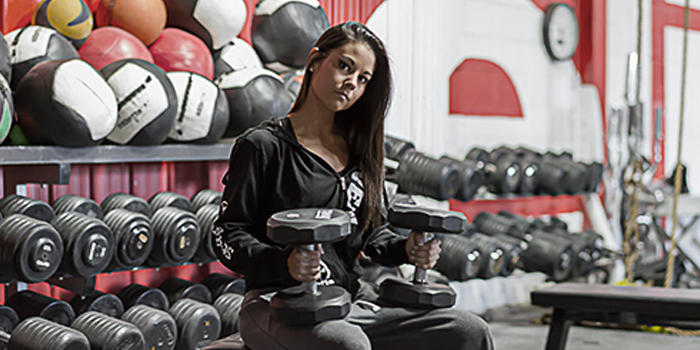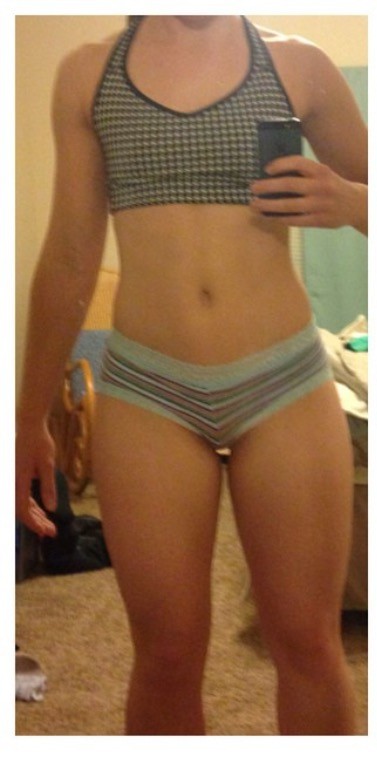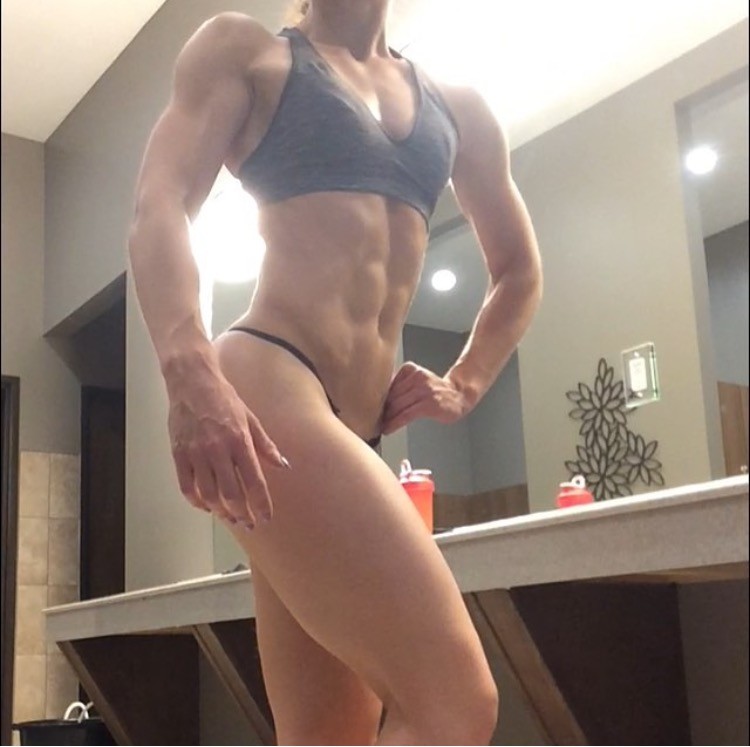
Finally we are at the good stuff! Now that we have discussed in the previous article installments all that can go wrong coming off a contest prep, let’s dig into how to reverse out of contest prep diet and training correctly.
Nutrition
There are honestly a million right ways (and a lot of wrong ways) to go about reversing out of a show prep diet. How you approach it depends on a number of factors such as how restrictive or depleting your diet was, how long you have been dieting, the approach you took (low carb, high carb, etc.), your gender, and other factors. That being said, I am going to discuss what I see work best with most people on average.
RECENT: Contest Prep Aftermath: Reverse Diet and Training Gone Wrong
I prefer to use a process that slowly adds calories back into their daily intake over time without putting on an excess amount of fat in the process. I also note that everyone’s ideal off-season body fat percentage, body weight, and overall goal is completely unique to them. I honestly don’t put a number to it. Some athletes can stay within 10-12 pounds of stage weight, eat like crazy, feel great in the gym, and make great progress building muscle mass in the off-season. However, you try to force that expectation on everyone and it just doesn’t pan out. Some athletes need to be around 20 pounds over stage weight (I am personally an example of this) to eat enough and build their metabolic capacity to just feel good in the gym and see progress. This has a lot to do with genetics, which no one can control. You really have to find what works for you.
For reverse dieting there are three components that I think play the biggest role in an athlete’s success.
1. Have a plan post-show. This could mean you or your coach planning your reverse diet. Having structure will go a long way in your long-term success.
2. Have an off-season goal. For most, it is to put on more size, build up some weak points, or stay within a certain range of their stage weight. Make sure you have a goal in mind so your reverse diet sets you up correctly.
3. Have a positive and healthy mindset. This can be a struggle for some. A lot of athletes cannot maintain stage leanness year round and it is okay to be okay with that. In fact, it is healthy and allows you to progress and build longevity in the sport. Think long-term, not short-term.
For this article I want to provide you with a specific example of reverse dieting and what it can look like. Below is an example of an actual client I worked with and our progress from start to finish. I also want to note that I chose the client below to use as an example because her progress is the easiest to understand. Not every prep is this “flowy” or smooth. This particular client also responded well to progressively lowering carbs as the main focus, which typically works well. Again, keep in mind that this works well for example purposes but not as an unbreakable rule. However, I have a handful of clients where this approach doesn’t work at all. It's very individual.
Client Jane
Female, 150 Pounds Off-Season
Starting Point (16 Weeks Out)
- Calories: 2,300 kcals
- Protein: 170g
- Carbs: 250g
- Fat: 70g
Ending Point (1 Week Out – Peak Week Before Carb Load)
- Calories: 1,300 kcals
- Protein: 165g
- Carbs: 55g
- Fat: 45g
Total pounds lost: 22 pounds
Stage weight: 128 pounds
So if we take a look, she lost a little over a pound a week on average. From a fat loss perspective, this is a pretty healthy and expected range. Note that she was only at 1,300 calories for less than 2 weeks, which was her lowest point. I definitely have some competitors who stay much higher than that and some have to go a bit lower at the end. I can honestly say I’ve never taken a client below 1,200 calories, but everyone is different so it really depends. She ate plenty in her off-season, so that worked to her advantage.
However, I can look at this and her response overall and have a better understanding as to where to take her in terms of a reverse diet. For this particular client to start her reverse, I focused on carbs first since we had to take her pretty low in comparison to her starting point. I added in 20 grams of carbs every 1-2 weeks post show. From, there I added in fat a little bit more slowly, roughly 5 grams every week once we had carbs where we wanted them. This also varies. Sometimes I will rotate adding carbs and fat bi-weekly. Protein I typically leave the same no matter what. There are different viewpoints on this of course, but by leaving it alone it takes out a whole variable I don’t have to worry about. This makes macro progression much easier to manage. After 3.5 months post-show (which was a few weeks fewer than her contest prep length) she was back to the following point:
3.5 Months Post-Show – 140 pounds
- Calories: 2,300 kcals
- Protein: 170g
- Carbs: 250g
- Fat: 70g
As you can see, she made her way back to where she started calorie and macro wise, but she is now 10 pounds lighter than where she started, and only 12 pounds over stage weight. She is currently maintaining this weight range pretty easily 6+ months post show. She also has 1-2 off-meals per week that I don’t expect her to track 100%. I think incorporating intentional off-meals while reversing really helps kill cravings and prevent binge-like eating patterns. I like to think of these meals as “life” meals where you are out with friends, traveling, and just living life. Enforcing strict eating year round is definitely a slippery slope; it's very important to maintain balance from a mental perspective.
Training
Reversing your training is a little less complicated. In some cases not too much changes. It really isn’t a “reverse” per se; it is more of an adjustment. Your main focus here is to really take a look at your current in-season training from a frequency and intensity perspective and adjust accordingly. We typically want to slowly taper down, especially from the cardio perspective, to give our bodies a break. Below is an example of training flow post-show. I will use the same example client as above for consistency.
In-Season Training
High Volume Training
- Upper and Lower Body Splits
- Five Sessions/Week
HIIT Cardio Training
- 2-6 Sessions/Week Progressively
- 10-20 Minutes
LISS cardio training
- 1-2 Sessions/Week Progressively
- 45 Minutes
2 Weeks Out
We lowered rep ranges to 6-8, increased load, and decreased sets for some training days. I incorporate this transition to help preserve muscle close to show day while in a caloric deficit.
Off-Season Training
Week 1-3 Post-Show
We returned to high volume training with upper and lower body splits for five sessions per week. HIIT dropped from 6 times per week to 4 times per week and LISS cardio stayed the same.
After a show there is a good chance off-meals have taken place from things such as refeeds during peak week. I like to keep training volume high right after and make use of those extra calories.
Week 4-8 Post Show
I had her back down on volume and frequency a bit. She kept the upper and low body split but moved to 4 training days per week. HIIT dropped again from 4 times per week to 2 times per week. LISS also dropped to once per week.
I like to back things down a notch starting about a month post-show. I think it provides a good opportunity to rest and recover. At this point ‘Jane’ had reversed really well, so her increase in calories wasn’t a worry to me in terms of reducing her training a bit. Your metabolism is constantly flowing; it is never stagnant. It adjusted really well so we were in a good place to rest and give her body a break. This also puts your body in a great position to enter deep off-season training where you can go heavy and train hard without injury.
Overall, I hope this gives you all a good idea of what a reverse diet and training can look like. Always keep in mind this may vary from person to person. Regardless of how an athlete reverses from a show, the main importance they focus on is keeping their mind and body healthy during the process. Also be realistic with your off-season goals, and patient as you may hit road bumps or have to take your reverse in a different direction (unlike above, which is an almost flawless example). Feel free to comment below with any questions or comments about your own reverse diet and training experiences. I would love to hear from you!















Glad you liked it! Thank you.
- A